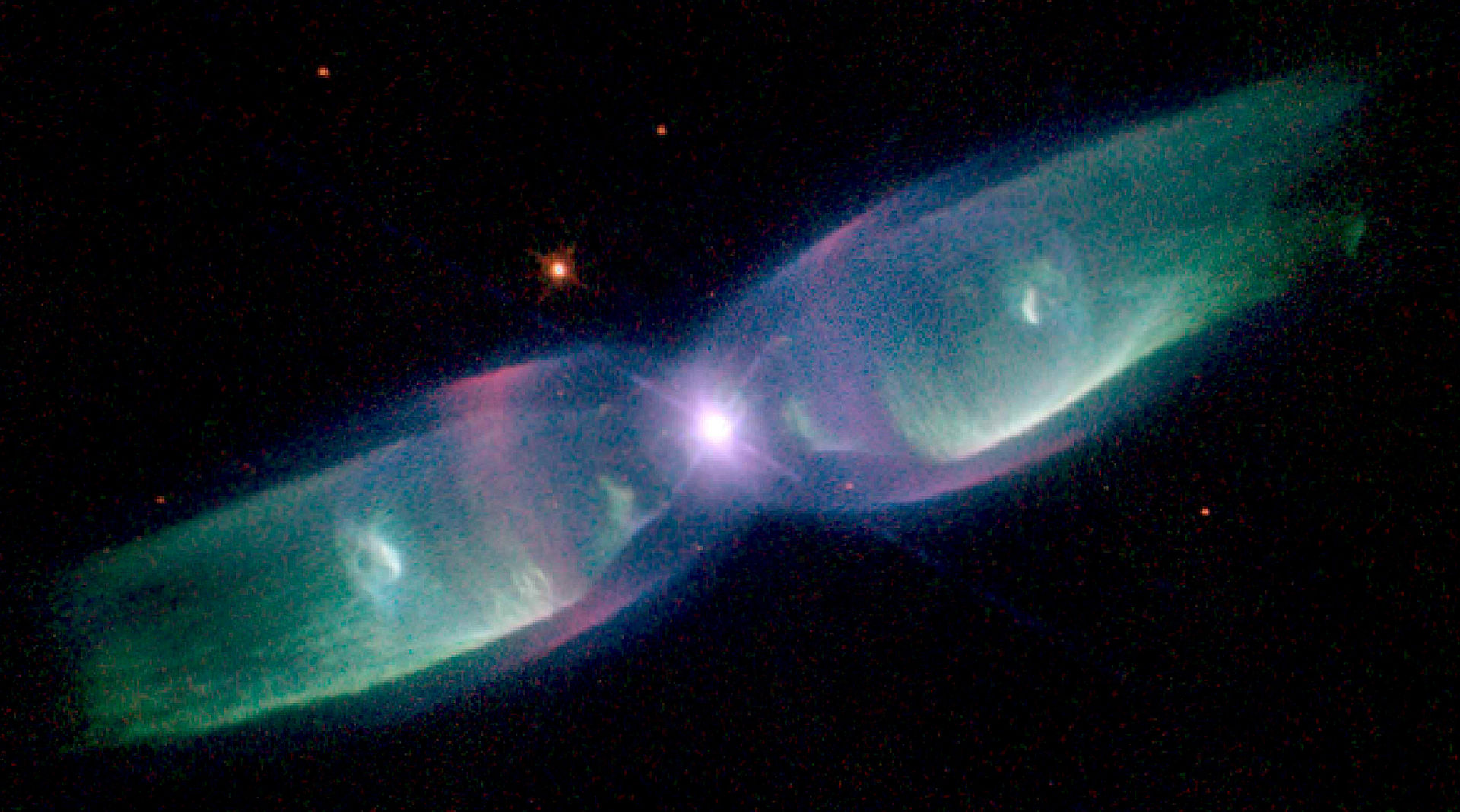johnnydeep wrote: ↑Wed Oct 12, 2022 9:52 pm
Ann wrote: ↑Wed Oct 12, 2022 4:34 am
SquidFinal3smaller1024[1].jpg
Ou4: The Giant Squid Nebula
Image Credit & Copyright: Tommy Lease
That's a fine image! And the phenomenon itself, with this kind of giant bipolar outflow from a triplet of hot stars that are apparently all still fusing hydrogen in their cores, although the most massive one seems to be running out, is indeed remarkable. No other system with an outflow even remotely similar to this one has been identified, to my knowledge.
APOD Robot wrote:
...the true distance and nature of the Squid Nebula have been difficult to determine.
And there appears to be no Gaia parallax for this triple star, either. That's really a pity. Because if it turned out that HD 202214 is much closer than we think it is, then we might have to think of it as the central star of a planetary nebula.
I don't think that Ou4 is a planetary nebula. But I would like to know!
Ann
Wait, the "
recent investigation" link says:
Conclusions: The apparent position of Ou4 and the properties studied in this work are consistent with the hypothesis that Ou4 is located inside the Sh 2-129 H ii region, suggesting that it was launched some 90 000 yr ago by HR 8119 [aka HD 202214]. The outflow total kinetic energy is estimated to be ≈4 × 1047 ergs. However, we cannot rule out the alternative possibility that Ou4 is a bipolar planetary nebula or the result of an eruptive event on a massive AGB or post-AGB star not yet identified.
Are you suggesting something different could be going on? Or maybe I'm not appreciating that the bipolar "squid" shape (Ou4) could be anything BUT be caused by the clearly central HR 8119. Or maybe the exact definition of a PN is not clear to me.
The reason why I was asking is that I remember that the nature of Ou4 was discussed when it was first discovered, and at least some people thought that it was probably some sort of a planetary nebula. Some planetary nebulas do share the extreme bipolar nature of Ou4:
Ou4: The Giant Squid Nebula.
Image Credit & Copyright: Tommy Lease
Many planetary nebulas are dominated by OIII emission, and Ou4 is "all OIII". So Ou4 could have been a planetary nebula.
My objection to the idea that Ou4 would be a planetary nebula is that it is (or appears to be) located inside a fairly normal-looking hydrogen alpha emission nebula, and we don't expect planetary nebulas to be located inside emission nebulas. The central stars of planetary nebulas used to spend millions of years being cool red giants, which are incapable of ionizing an Hα nebula (or any sort of emission nebula).
But my main objection is that the central star of Ou4 is wrong for a central star of a planetary nebula. The star, HD 202214, very much appears to be a hot massive star of spectral class B0 or O9. Such a has has a mass of, probably, at least 15 solar masses. But the central star of a planetary nebula has a mass of around 1 solar mass, and never more than 1.4 solar masses. HD 202214 is also too cool, probably at some 30,000 K, for a central star of a planetary nebula. Their temperaturers are typically
at least 50,000 K, and often more.
Therefore, if Gaia could prove that HD 202214 is so far away that it has to be a massive still hydrogen-fusing star, and not so nearby that it might be a light-weight burnt-out stellar cinder, we would know that Ou4 is not a planetary nebula.
Ann
 Ou4: The Giant Squid Nebula
Ou4: The Giant Squid Nebula

